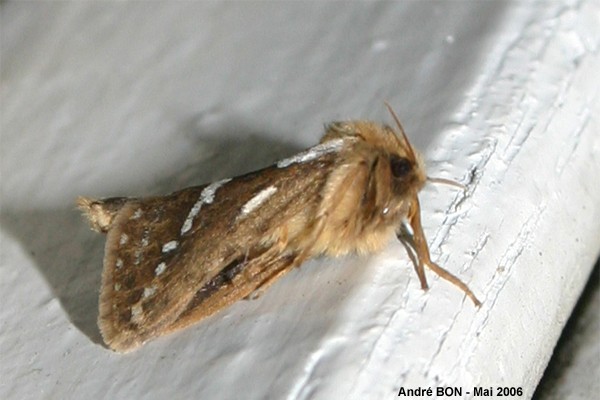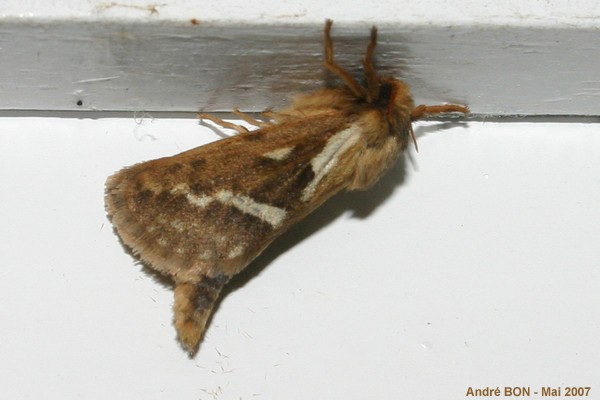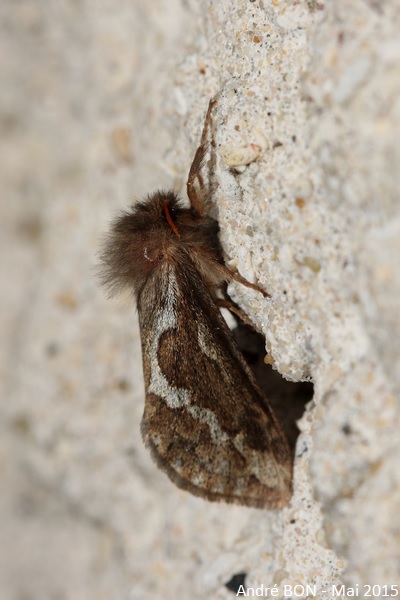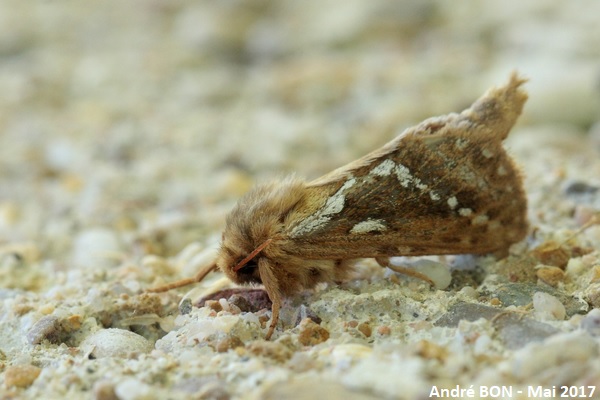



| Common Swift (Korscheltellus lupulinus (Linnaeus, 1758)) |




|
|
Scientific name: Korscheltellus lupulinus (Linnaeus, 1758) Common name: Common Swift Other names: Garden Swift French name: Louvette Order: Lepidoptera Suborder: Heterocera Family: Hepialidae Subfamily: Hepialinae Wingspan: 25-30 mm. Biotope: Gardens, cultivated lands. Geographic area: Temperate Europe Flight time: May to August. Number of generations : 1 Caterpillar: 30 to 40 mm, large red-brown pentagonal head, long sinuous body, white, bristling with long silken threads. Very agile, it lives underground and eats roots. Host plant: Strawberry, Lettuce, Chicory, Lucerne, Potato, Maize, Tobacco and many other plants. |
The wings are elongated. The antennae are very short. The pattern on the forewings is very variable. There is a row of white oblique spots (often missing on females) on a brown background. The hindwings are greyish-brown. The Common Swift are often attracted to light. Larvae can cause damage to the cultivations by attacking the roots of the plants. Females do not lay their eggs in a specific point, they drop them while flying. |
| [To know more about the Common Swift] [Next picture] [Top] |

|
This Common Swift was attracted to the lights of the house. Maybe I've got less strawberries in my garden this year because of this moth. |
| [To know more about the Common Swift] [Next picture] [Previous picture] [Top] |

|
Almost at the same date, just one year after my first observation, the Common Swift is attracted again to the window light. See your child next year! |
| [To know more about the Common Swift] [Next picture] [Previous picture] [Top] |

|
And here is a new sighting of this species which can be seen in my garden during the second half of May with an impressive regularity. |
| [To know more about the Common Swift] [Previous picture] [Top] |

|
And here is another sighting of the same species, however a few hundred kilometers further south. We note once again the low dispersion in the observation dates. |